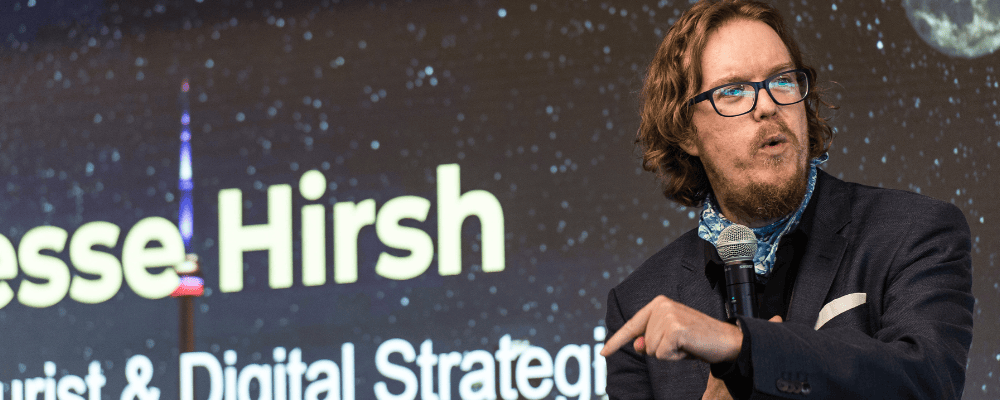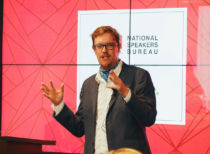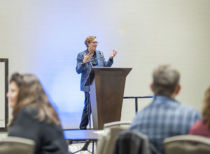Keynote Speeches
Who we listen to and who we trust is changing, while at the same time, smarter systems and machines are emerging that are ready and willing to make decisions on our behalf. Automation and machine learning are having a disruptive and transformative effect on every sector and industry, driving innovation, and offering the potential for greater scale and efficiency. In some areas this technology is increasing capacity and capability, enabling new products and services, while fueling growth. Yet in other areas, automation will lead to dramatic consolidation and disruption, especially with regard to employment. There are also significant ethical issues to consider as we embrace these smart systems, especially when algorithms are wrong or exhibit prejudice. We’re in a unique historical moment to discuss and ultimately shape the role of automation in our lives and the opportunities and challenges it presents.
The increasing complexity of our technological society reinforces the necessity for responsible and participatory cyber security practices. The stakes have never been higher, and yet the number of incidents and data breaches continues to increase in severity and sensationalism. Part of the problem is that the average user is either alienated from, or lacks the necessary literacy, to follow current best practices. Yet we can’t blame the victim/user. As IT professionals we need to step up and adapt our methods to increase our effectiveness. An excellent example is the rise of participatory design and inclusive computing. As values and methodologies, these concepts argue that rather than design tools for users, we should be designing and building tools with users. While bias in AI is an obvious and important example of where this is currently being applied, cyber security is arguably just as important, and in need of immediate attention, or rather participation. In this session we’ll explore participatory cyber security, inclusive computing, what it means, and how it can be used by admins and developers.
We live in a technology driven society where almost all the world’s knowledge is available to us on our mobile devices. The key question becomes, what are we going to do with it all? Knowledge alone is not enough, we need each other, as the secret to success is both social, and interactive. The world is our classroom, and technology allows us to be simultaneously students and teachers. While automation and artificial intelligence have an important role to play in making education as accessible as possible, we cannot forget that learning is what makes us human, and knowledge increases in value the more it is shared. That’s why the future of education is peer to peer, on demand, and in abundance. Learning as we go, sharing what we know, and building knowledge networks to ensure we all benefit from the process. This is the pedagogy of the Internet, and the path to our collective prosperity and success.
Farming continues to be a significant source of innovation as farmers hustle to make the most of their land and livestock. Robots, automation, and technology in general are enabling a new era in agriculture that has the potential to address global hunger, climate change, and ensure we all have good food to eat. However all of this depends on how the technology is used, and more importantly who controls it. As farms become smarter, the opportunity is not just better agricultural practices, but a better relationship between the grower and the eater, and everyone in between. The pandemic illustrated how brittle our food supply chain can be, and the economic crisis it induced has left many farmers struggling to survive. How can technology and transparency ensure sustainability and success?
For the past couple of decades, governments around the world have recognized the power and potential of digital technologies but have been slow to adopt them, for a wide range of legitimate reasons. However the pandemic has induced a genuine urgency as governments wrestle with the combined challenges of remote work for their civil servants and the demand from the public for digital service and program delivery. Most governments have been relatively successful in responding to this crisis, however there’s still no end in sight. How can governments continue with their upgrade amidst this ongoing pandemic? What is working? What’s not? What does the future hold for digital government? How can we adapt? How can we lead?
Jesse also offers a unique and customized approach to his presentations.







Similar
Speakers